-
Posts
5,288 -
Joined
-
Last visited
-
Days Won
78
Content Type
Profiles
Forums
Gallery
Downloads
Blogs
Events
Store
Aircraft
Resources
Tutorials
Articles
Classifieds
Movies
Books
Community Map
Quizzes
Posts posted by old man emu
-
-
Jay,
The company I work for has been involved in the assembly of a number of aircraft purchased in the US and sent over here in seatainers. We don't actuially have anything to do with the packing, shipping and Customs. These are all arranged by the purchaser.
However, I can tell you the name of the organisation in California that handles all this. The organisation ships heaps of planes around the world, so is not shonky. If you can hang on until Thursday night, I'll send you the contact details.
Old Man Emu
PS
Anyone who wants to get bulky airplane components (engines, timber, fuselage parts) might like to use this organisation too. There's always plenty of space on the floor of these containers.
-
Well, compare the two types: plywood RAF15 and stick USA Airfoil No 27.
Don't forget, we are building a puddle jumper here, not a competition standard fully aerobatic jobby that's going to pull big G's. We don't have to build it as if it was a Mack truck. The Pitts uses 1/4x1/4 sticks in its ribs. The RAF15 rib is 1/16 ply with 1/4x1/4 cap strip. The USA No 27 calls up 1/8x1/2 material.
Isn't it ironic that in cross-sectional area, Pitts = 1/4x1/4 = 1/16; USA No 27 = 1/8x1/2 = 1/16, and the plywood has the same cross-sectional area, plus more material overall. I think the RAF15, and a CNC cut rib would be a lot stronger than a built up rib.
Old Man Emu
-
I wasn't going to use electrical conduit for the fuselage of a real plane.
 The idea was to use it as a cheap substitute for chromemoly during the mock-up stage. The conduit only costs about $2.50 for four metres, so it's a cheap as.
The idea was to use it as a cheap substitute for chromemoly during the mock-up stage. The conduit only costs about $2.50 for four metres, so it's a cheap as.Creating a mock-up allows me to see if the cockpit is going to be big enough for me. I can also mock-up control components and such to see how they go together. I can cut a lot of the brackets etc from plywood using my CNC machine to check fit them. It's also a lot easier to cut and birdmouth the crossmembers by using the conduit. I can label each bit and when the time comes to construct the tubing frame, I'll have a template for every piece.
Regarding "sticks -v- plywood ribs".
Making ribs from sticks is very time consuming, and each rib, no matter how much attention to detail is made, will be unique. The strength of each rib is dependent on the stength of the glued joints between the sticks and the gussets.
Using CNC technology, each rib will be exactly the same, and there is no reliance on surface-to-surface glue joints. As I wrote, CNC cutting will produce a wing load of ribs in a couple of hours, tops.
I'm just looking to use some 21st Century technology to save time.
Old Man Emu
-
RAF? British organisation?
He made it to Air Commodore.
OME
-
I've got lots of thoughts about building my own plane, and I'd like to air them amongst like-minded people. I could start writing a blog, but I suspect most people on this forum just jump on, check out the newest posts, make a comment or two and then jump off to check out other websites, and so, a blog wouldn't be read as much as a Thread entry.
So here goes. Look forward to your responses.
Why do we still make ribs from little sticks?
How many aircraft wing plans show the ribs built up with sticks of spruce?
The plan for the rib for the Gere Biplane calls up 1/8 x 1/2" spruce for the caps, struts and braces. The caption to the diagram says, "The Gere rib ... follows modern construction practice." So, if you build it that way, you end up with a rib that internally has a typical truss appearance. Published in the same book, in the same year is the rib diagram for the Powell Racer which shows the rib for that plane cut from 1/16" plywood. It has lightening holes and spaces cut into it.
Now, which rib construction shows "modern construction practice"?
Both plans identify which airfoil is used in each airplane, and there is data on chord length and spar location. Both have tables which show the rib boundary offset from the chord line at set distances from a stated datum point (in both cases, the leading edge). From these figures one can produce a set of (X,Y) co-ordinates that can be used to plot the curvature of the ribs to produce a template for assembly. In fact, I can import the set of co-ordinates into a CAD program and it will draw the template at the press of a button. I can then export the template as a *dxf file to a CAM program which will create the control code so the rib can be cut by a CNC machine.
I can tell the CAM program to cut however many ribs I need, and if I tell it the length and width of the plywood sheet I'm using, it will nest the cuts so that the least amount of material is used to produce the ribs. Press and I'll have all my ribs cut exactly the same in about an hour or so.
Why should I use 1930's "modern construction practice" in 2010, when it would be easier and less time and material consuming to use 21st Century technology?
Old Man Emu
-
The jury has returned its verdict. The Powell PH Racer is out. It's too small and can't carry any realistic load. A bloke would have to be the sixe of a Melbourne Cup jockey to fly it any distance. The aerofoil would have to be changed. There's not low price (cheap) engine that's suitable, yada, yada and so forth and fifth.
So. What now?
From the same source comes the Gere Biplane. A single seater with a 19ft span and 16ft length. It was originally designed for Ford A or T engines, so it will take a VW with ease.
If you Google "Gere Biplane" you find the one that has been built in New South Wales. Looks like it originally flew with an horizontally opposed engine of some sort, but that has been replaced by another type you'll soon identify.
It was designed with square ended wings, but I don't think they look nice. I think it will be worth the effort to make a rounded end.
Here's some elevations. What won me was the design of the instrument panel.
Old Man Emu
-
I found a site that has some "copyright free" plans for some common aircraft.
The site is Hubpages.com, but the easiest way to get to the right place is to google this:
cfair3
It will come up with a link to one of several pages of plans, and the next link returned by Google will be Hubpages.com etc, etc.
To down load the plans you have to have a Yahoo email account, but it only takes a moment or two to create one.
Old Man Emu
-
A lesson straight from the horse's mouthGrammar is important! Capitalization is the difference between helping your Uncle Jack off a horse and helping your Uncle jack off a horse.

OME
-
I went over to Wedderburn today because they had an Open Day. The people who have hangars there had thier planes out, and a lot of folks flew in, other people drove in. It was good to see young families wandering about, taking it all in.
There was a nice collection of aircraft there. It was nice to go onto an airfield where Cessnas and Pipers were well in the minority. Ther was even a display of scale models by the radio control guys from the Appin club.
At this sort day it's usual to have old cars and such. It was nice for a change to see some vintage dirt track speed cars. Brought back the sounds and smells of Saturday nights at the Speedway Royale at Sydney Showground. There were vintage bikes, and I had a chuckle to myself when I saw a 125 cc Suzuki from 1967. Heck. I remeber when they were new!
I must say I was impressed by the appearance of the airfield, especially aroung the hangars. Everything was so nice and neat. No bits and pieces of junked aircraft thrown any old where. The new tar sealed taxiways looked beaut, and the concrete apron around the fuel pump was spot on.
Congratulations to the members of the club for taking pride in your home.
OME
-
I'm stonkered.
Today I sat in a Jabiru J160 to see how I fitted, because the distance from the centre console to the side of the door is a tad narrower than the Powell's cockpit. I was also testing if I had to bend my legs when I had my feet on the rudder pedals. Everything fitted OK, so I'm beginning to believe that the plane will fit me.
I was in the Jab with the owner. We did some quick calculations and decided that with both of us on board, we could carry enough fuel for 1 hour's flight with 45 min reserves.
Now this Jab has a 80Hp donk and I know it would fly with both of us on board and at its MTOW. The owner said the Jab had a high Wing Loading value. It's 13.8 lb.sq ft.
When I got home I did some number crunching and calculated that the MTOW of the Powell is 520lbs, based on a wing loading of 6.2 lbs/sq ft. With an Empty weight of 310 lbs, that only leaves 210 lb load. If I drop my weight to 80 Kg, that only leaves enough load for 20 litres of fuel, or about 5 US gallons.
If all other factors are held the same I obviously need to increase the Wing Loading,
How do I do that?
Old Man Emu
-
How's this one? OK for the low to medium user. The price in the brochure is out of date. I can supply it for under $AU50 +GST +P/H
If you could let me know by by Friday it would be good.
-
OME, do you mean Arthur BUTLER. (Comper Swift?.)Nev
Yeah, that's the bloke
OME
-
A etter version of the rib stitching guide.
I've published a better version of the rib stitching guide here:
Old Man Emu's Blog | Thoughts and Ideas scratched up by Old Man Emu
Old Man Emu
-
I'm putting together an order for stuff from the States. If you want tools or odd bits of hardware, please contact me by Friday, this week.
Old Man Emu
-
This plane building disease is catching. In the 80's the bloke I work for built himself a Pitts S-1, which he still owns and will fly when we get around to completing the 100 hourly. When he gets some time to himself, he's working on a Gee Bee Sportster.
Two of the young AMEs I work with have decided to get started on their builds. One is going to be a Pitts of some type (probably an S1) and the other is a replica of a plane christened "Miss Los Angeles"
That leaves the apprentice and the storeman (me) not building anything. And here I am, selling nuts and bolts to everyone else who's building their own.
I was ratting through the Boss' library and found the original 1930's book that had the plans for the Pietenpol Aircamper. He also has the following year's edition and in it I found the plans for the Powell Racer. This is a little single seat biplane that contested and won some competitions at the 1925 New York Air Races.
It's a pretty straight forward aircraft of rag and tube construction. It's 14' 1/2" long with a span of 15'9". The original had a Bristol Cherub 2 cylinder engine of 32HP swinging a 48" prop. Top speed 80 Kts (95mph); Cruising speed 70 Kts (80mph), and Landing speed of 28 Kts (32mph).
The aerofoil is the RAF15 which is used in de Haviland biplanes including the Tiger Moth. The wing is wood and rag. No flaps.
I'm going to start with a "Proof of Concept" on the fuselage. The concept to be proven is whether or not I can get my big fat body into it. My GP strongly supports this project if it means I shed a third of my body beautiful. I'll be laying out the fuselage jig and am going to use electrical conduit in place of the chromemoly tubing.
I'll start blogging my efforts on Old Man Emu's Blog | Thoughts and Ideas scratched up by Old Man Emu starting this weekend.
Old Man Emu
-
Burbles,
Here's three topics:
Arthur Miller.
1930's pioneer who flew from England to Australia, solo. Of greater interest is his attempts to operate feeder airline services out ot Tooraweenah, (between Gilgandra & Coonabarabran) and serviceing the central and northwest of NSW & southwest Queensland. I have a little booklet about him in my office at Camden Airport.
Jim Hazleton.
Post WWll operator out of Cudal near Orange NSW. Apart from pasengers, he operated crop dusters and had an Ag pilots' school where he taught a lot of Chinese pilots how to spread their seed.
Fertilizer Bombers.
The story of post WWll aerial agriculture and its economic importance in the wool industry through pasture improvement. Could include a discussion of the economic effects of the superphosphate bounty on the rural industry, and on the Pacicif island of Neuru. Air Ag at Bankstown was a big operator, using DH Beavers, but lots of starters used ex RAAF DH Tiger Moths. And not to forget that there was the Ceres (a modified Wirraway), the Transavia AirTruk, and a couple of other Aussie designs.
Want any more?
Old Man Emu
-
A Practical Guide to the Modified Seine Knot
Due to the limitations of the size of file that can be posted on this site, I have had to publish the guide to tying the Modified Seine knot on a blogsite.
Here is the link:
http://www.oldmanemu1.wordpress.com
Old Man Emu
-
Dexter,
I will PM you.
I have a commercial agreement with the owners of this site which allows me to advertise in the Suppliers thread. I am of the opinion that if I places Posts which indicate that I can supply stuff in other Threads, I run the risk of dishonouring that agreement, and I can be permanently banned from this website.
If you want to know if I can supply stuff, please post on my thread in the Supplers' section
Thanks,
Mark
Old Man Emu
-
David,
Just a reminder that I am a supplier of aircraft hardware, and I pay a fee to have a thread in the Suppliers' forum here.
That said, send me the part number and I'll send you a quote. I'll have it to you by smoko on Monday.
Old Man Emu
-
Many of you will know that the Bishop and the Showgirl have been a comedy duet for years and years. The tag to their one-liners has been "... said the Bishop to the Showgirl"
Well, I have to report that the duet has broken up irrevocably. It seems that the Showgirl was fed up with the Bishop's sermons on the mount.
-
How would you determine the Vne of a vintage plane?
I’ve got the originals of the 1932 & 33 “Flying and Glider Manual” in which the plans for the Pietenpol Air Camper and Sky Scout were published. Also the plans for the Gere Biplane, Corben Baby Ace are in these books. These planes were designed to use Ford Model A or Model T engines which produce about 40HP and were expected to have top speeds of about 65 to 70 Kts.
Eighty-odd years on and now I can get hold of a lightweight engine which will produce about 100HP for about the same weight penalty. With more power comes more speed, but I wonder how much more speed I can ask of the airframe before there becomes a Vne problem.
I’ve been googling all over the place, and have found some formulae with which I can calculate Vne. These seem to suggest that Vne is ultimately determined by the wing loading. Here is the sequence of calculations:
Wing Loading (WL) = Gross Weight/ Wing Area
Design Cruising Speed (Vc) = 33√WL
Design Dive Speed (Vd) = 1.4Vc
Never Exceed Speed (Vne) = 0.9 Vd
Here’s a table showing some results based on a hypothetical wing area of 150 sq ft:
So what do you reckon?
Old Man Emu
-
My flight was being served by an obviously gay flight attendant, who seemed to put everyone in a good mood as he served us food and drinks.
As the plane prepared to descend, he came swishing down the aisle and said... 'Captain Marvey has asked me to announce that he'll be landing the big scary plane shortly, so lovely people, if you could just put your trays up, that would be super.'
On his trip back up the aisle, he noticed this well-dressed and rather Arabic looking woman hadn't moved a muscle. 'Perhaps you didn't hear me over those big brute engines when I asked you to raise your trazy-poo, so the main man can pitty-pat us on the ground.'
She calmly turned her head and said, 'In my country, I am called a Princess and I take orders from no one.'
To which (I swear) the flight attendant replied, without missing a beat, 'Well, sweet-cheeks, in my country I'm called a Queen, so I outrank you. Tray-up, Bitch'
-
Closing off Tower Road near Rabaul Road must please the shopkeepers at the Georges Hall shops. Most times I'll go up to the traffic lights then thru Georges Hall rather than risk the right hand turn into Rabaul Road and then battle over the speed humps. If I go past the shops, I'll drop in at the Vietnamese bakery for a hot buttered roll, and maybe use the Post Office.
The road was allegedly closed for maintenance, but in reality it was closed to stop people who have no business to transact on the airport from using the route as a short cut.
With the new Airport CEO taking over recently, we may see a movment towards and aviation-friendly BAL.
"Hotel Oscar Golf, clear to take off."
Old Man Emu
-
Why are they using the term "recreational flyers" when they know very well that RA-Aus recreational pilots don't have CTA access? Hmmm?
The message was directed to non-commercial pilots, as opposed to commercial operators. It was not directed to RAA pilots.
I'd say the wording was used by some poor copy writer who was given the job of writing the press release, but who did not know thre was a difference between GA and RAA.
I noticed on some advertising while I was in the BAL office that organisations who had landing fee arrangements with BAL (ie flying schools) were not beneficiaries of the free landings on weekends program.
I agree that it is probably a move by BAL to get more people back to BK. Wait a while to see if there is an increase in weekend traffic, then see the landing fees come back.
Old Man Emu



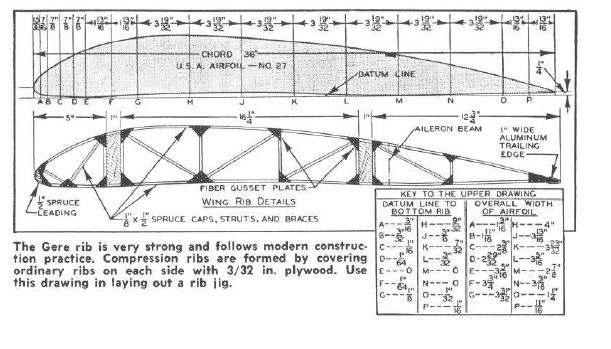

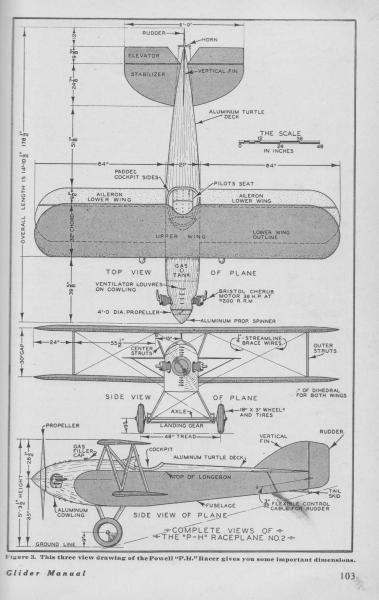
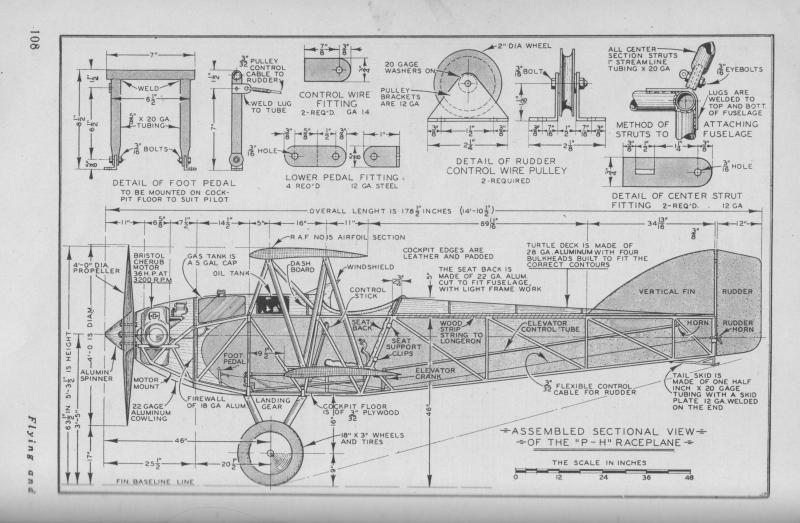
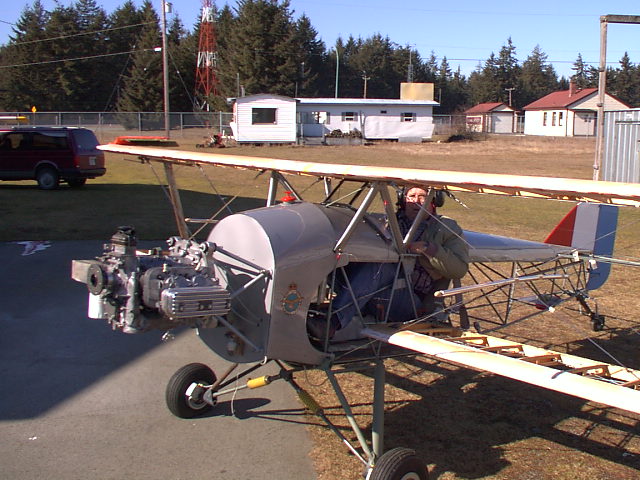
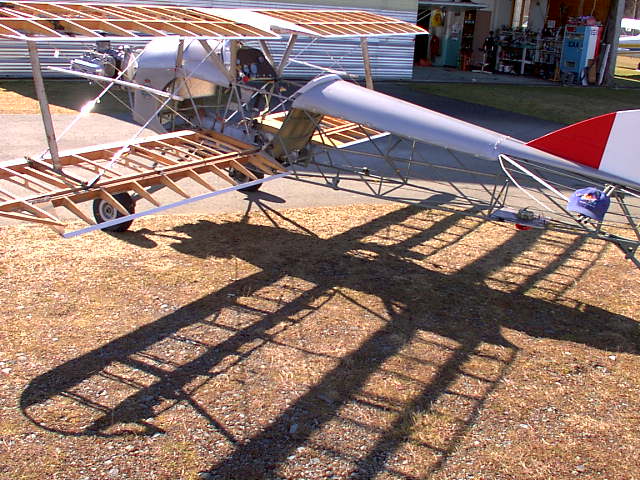
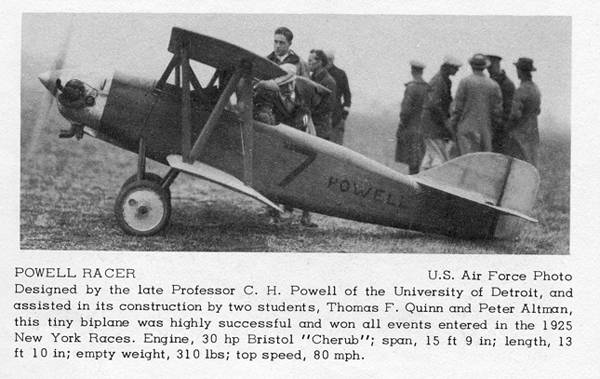
Pietenpol Air Camper Corvair build
in Aircraft Building and Design Discussion
Posted
Scotty,
How much does a Model A engine + radiator etc weigh? I was wondering of the Corvair was lighter, or not.
I was speaking to the buyilder of the Gere Biplane from near Cowra, and he said that when they put the Jabiru into it as its forst engine, they also had to add a great block of lead to the nose. Guess the Jab was much lighter than the A Model.
Also, what sort of money are you looking at to get the Corvair to be ready to hang in your plane?
Old Man Emu